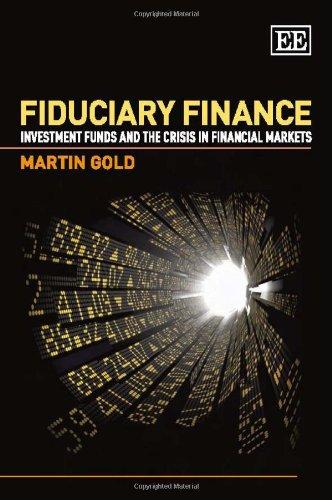Question
21. A bond with a ten percent coupon rate bond pays interest semi-annually. Par value is $1,000. The bond has three years to maturity. The
21. A bond with a ten percent coupon rate bond pays interest semi-annually. Par value is $1,000. The bond has three years to maturity. The investors' required rate of return is 12 percent. What is the present value of the bond?
| a. | $1,021 |
| b. | $1,000 |
| c. | $981 |
| d. | $951 |
| e. | none of the above |
22. A bond with a 12 percent quarterly coupon rate has a yield to maturity of 16 percent. The bond has a par value of $1,000 and matures in 20 years. Based on this information, a fair price of this bond is $____.
| a. | 1,302 |
| b. | 763 |
| c. | 761 |
| d. | 1,299 |
23. From the perspective of investing institutions, the most attractive foreign bonds offer a ____ and are denominated in a currency that ____ over the investment horizon.
| a. | high yield; appreciates |
| b. | high yield; remains stable |
| c. | low yield; appreciates |
| d. | low yield; depreciates |
24. The value of ____-risk securities will be relatively ____.
| a. | high; high |
| b. | high; low |
| c. | low; low |
| d. | none of the above |
25. The larger the investor's ____ relative to the ____, the larger the ____ of a bond with a particular par value.
| a. | discount rate; required rate of return; discount |
| b. | required rate of return; discount rate; discount |
| c. | required rate of return; discount rate; premium |
| d. | none of the above |
. 26. A(n) ____ in the expected level of inflation results in ____ pressure on bond prices.
| a. | increase; upward |
| b. | increase; downward |
| c. | decrease; downward |
| d. | none of the above |
27. Lisa can purchase bonds with 15 years until maturity, a par value of $1,000, and a 9 percent annualized coupon rate for $1,100. Lisa's yield to maturity is ____ percent.
| a. | 9.33 |
| b. | 7.84 |
| c. | 9.00 |
| d. | none of the above |
28. An insurance company purchases corporate bonds in the secondary market with six years to maturity. Total par value is $55 million. The coupon rate is 11 percent, with annual interest payments. If the expected required rate of return in 4 years is 9 percent, what will the market value of the bonds be then?
| a. | $52,115,093 |
| b. | $55,341,216 |
| c. | $55,000,000 |
| d. | $56,935,022 |
29. A $1,000 par bond with five years to maturity is currently priced at $892. Annual interest payments are $90. What is the yield to maturity?
| a. | 13 percent |
| b. | 12 percent |
| c. | 11 percent |
| d. | 10 percent |
30. A bank buys bonds with a par value of $25 million for $24,040,000. The coupon rate is 10 percent, and the bonds pay annual payments. The bonds mature in four years. The bank wants to sell them in two years, and estimates the required rate of return in two years will be 8 percent. What will the market value of the bonds be in two years?
| a. | $24,113,418 |
| b. | $24,667,230 |
| c. | $25,000,000 |
| d. | $25,891,632 |
Step by Step Solution
There are 3 Steps involved in it
Step: 1

Get Instant Access to Expert-Tailored Solutions
See step-by-step solutions with expert insights and AI powered tools for academic success
Step: 2

Step: 3

Ace Your Homework with AI
Get the answers you need in no time with our AI-driven, step-by-step assistance
Get Started


